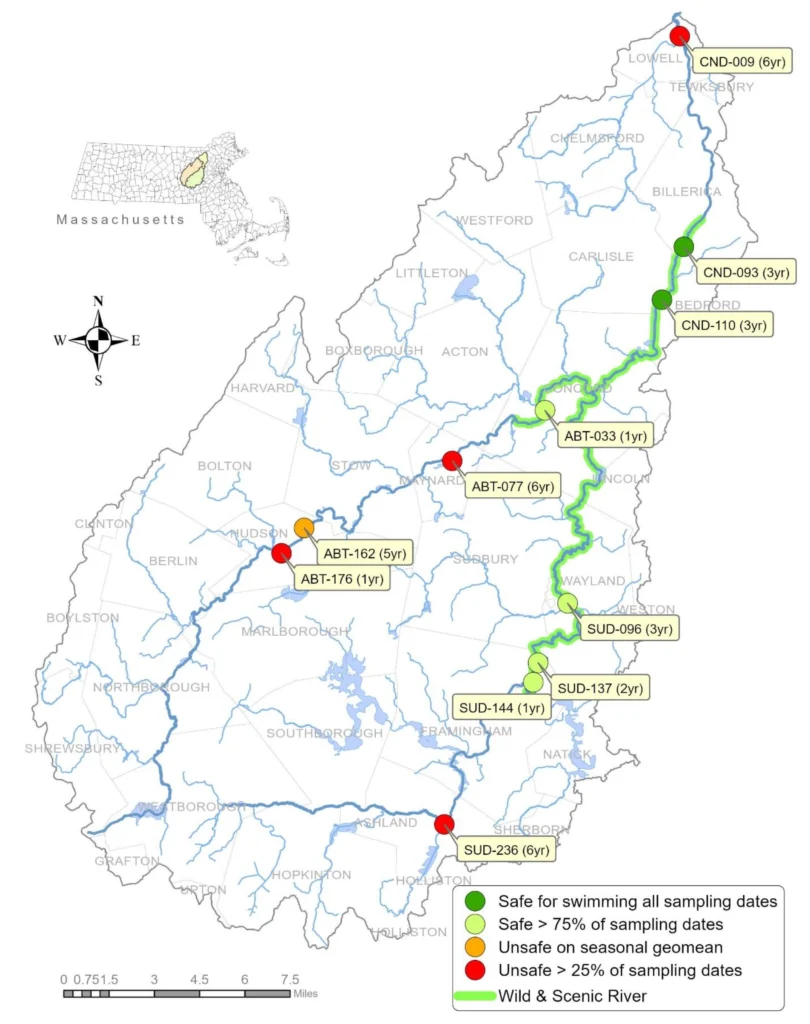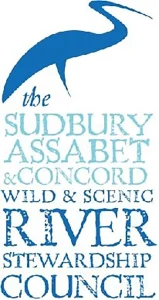Bacteria Health & Safety
Is the river safe for boating or swimming?



OARS continues to address this critical question through our E. coli bacteria monitoring program. Bacteria and other pathogens can enter the rivers through leaking sewers or septic systems, stormwater runoff, wildlife waste, or pet waste. High levels of E. coli, an indicator bacteria, have been linked by the EPA to an increased risk of gastrointestinal illness in swimming waters.
Bacteria Monitoring Dashboard
Our bacteria monitoring efforts help keep the Sudbury, Assabet, and Concord rivers safe for recreation and wildlife. This dashboard provides up-to-date results from our regular water sampling, showing bacteria levels across key locations in the watershed. Use this interactive tool to check water quality conditions before swimming, fishing, or paddling, and stay informed about the health of your rivers.
2019–2024 Bacteria Sampling Sites with color coded results

OARS volunteers collect water samples biweekly from May through September at seven core locations in the river system, plus an additional site in River Meadow Brook. Samples are analyzed in a lab, with E. coli counts recorded as the Most Probable Number (MPN) of colony-forming units (cfu). The EPA swimming safety thresholds are:
- Single-sample limit: 235 cfu/100mL
- Seasonal geometric mean limit: 126 cfu/100mL
We use these results to assess which river sections are safe for swimming, identify pollution sources, and work with local authorities to mitigate contamination.
2024 Bacteria Monitoring Results

Bacteria Monitoring Summaries
Older Summaries

Special Studies
In addition to routine monitoring, OARS conducts special studies to track bacteria pollution sources.
- 2020–2022: A focused study in Lowell identified ongoing sewage contamination in River Meadow Brook. We shared our findings with Lowell Wastewater Utility in 2023, and we continue to push for remediation. Read Study Report here.
- 2023: A special study in Maynard (ABT-007) pinpointed bacterial sources, with results provided to Maynard DPW in April 2024. Read study report here.
- 2024: In Ashland (SUD-236), we used qPCR DNA analysis to determine whether bacteria came from human or animal sources. The results confirmed human DNA in the water, and additional investigations identified potential sewage leaks. Read study report here.






